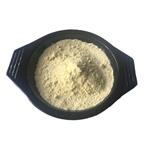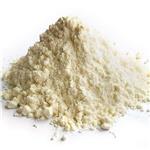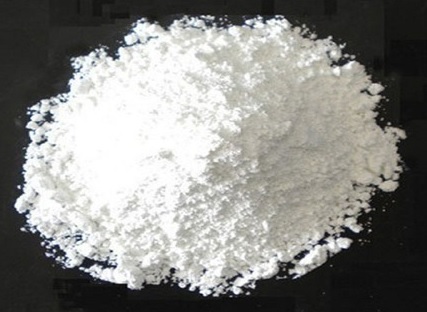- Barium oxide
-

- $0.00 / 25KG
-
2023-06-22
- CAS:1304-28-5
- Min. Order: 1KG
- Purity: 99%
- Supply Ability: 50000KG/month
- BARIUM OXIDE
-

- $10.00 / 1KG
-
2023-03-06
- CAS:1304-28-5
- Min. Order: 1KG
- Purity: 99.5%
- Supply Ability: 5000kg
- Oxide Barium Effective
-

- $50.00 / 50TON
-
2022-08-31
- CAS:1304-28-5
- Min. Order: 155TON
- Purity: 99%
- Supply Ability: 350
|
| | Barium oxide Basic information |
| | Barium oxide Chemical Properties |
| Melting point | 1920 °C | | Boiling point | 2000 °C | | density | 5.72 g/mL at 25 °C(lit.) | | refractive index | 1.98 | | solubility | soluble in dilute acid solutions, ethanol; insoluble in
acetone | | form | Powder | | Specific Gravity | 5.72 | | color | Light yellow-greenish to grayish | | Water Solubility | Sparingly soluble in water. Soluble in ethanol, dilute mineral acids and alkali. | | Sensitive | Moisture Sensitive | | Merck | 14,986 | | Exposure limits | ACGIH: TWA 0.5 mg/m3
NIOSH: IDLH 50 mg/m3; TWA 0.5 mg/m3 | | Stability: | Stable. Incompatible with strong acids, water. Protect from moisture. | | CAS DataBase Reference | 1304-28-5(CAS DataBase Reference) | | EPA Substance Registry System | Barium oxide (1304-28-5) |
| Hazard Codes | T | | Risk Statements | 20-25-34 | | Safety Statements | 26-36/37/39-45 | | RIDADR | UN 1884 6.1/PG 3 | | WGK Germany | 1 | | RTECS | CQ9800000 | | F | 3-9-34 | | TSCA | Yes | | HazardClass | 6.1 | | PackingGroup | III | | HS Code | 28164000 | | Toxicity | mouse,LD50,intraperitoneal,146mg/kg (146mg/kg),Current Toxicology. Vol. 1, Pg. 39, 1993. |
| | Barium oxide Usage And Synthesis |
| Description | Barium oxide is a white to yellowish-white,odorless powder. Molecular weight=153.34; Freezing/Melting point=1923℃. Hazard Identification (based onNFPA-704 M Rating System): Health 3, Flammability 0,Reactivity 2 . Reacts violently with water. | | Chemical Properties | Barium oxide is a white to yellowish-white, odorless powder.

Barium oxide is an alkaline earth flux that melts at 3493°F (1923C).It's an active flux at high temperatures and forms a strong eutectic with boron that can cause even matte glazes to run. Barium oxide gives strong, vivid colors, especially with copper and cobalt. It produces excellent satin and matte surfaces from crystallization. This is worth noting because alumina(in the form of clay) is also used to create matte surfaces, but only produces dull colors. With barium oxide you get both matte surfaces and vivid colors. It's sometimes used in small amounts to produce iron blue celadons. Barium oxide has a high viscosity and medium surface tension so it produces stiff glazes,but it will cause running in glazes that are fired too hot as its fluxing power increases with temperature. It has a medium expansion and contrac- tion rate.
Although barium oxide isn't volatile at ceramic temperatures keep in mind that it's extremely toxic, especially as a carbonate powder, when it becomes an airborne health hazard during mixing,and certainly if it leaches from a fired glaze. It was once used as a rat poison, so handle barium compounds with caution.Barium glazes aren't suitable for functional ware. Under laboratory conditions (i.e.. in pure water) barium carbonate is almost insoluble in water, but in acidic solutions it can become soluble, making it easier to absorb into the skin.
Barium sulfate is insoluble and even has medical uses. It's sometimes used to provide a less toxic form of barium oxide in glazes and clay bodies(as in Wedgwood's Jasperware), but it does release sulfur fumes when fired.
Soluble sources of barium oxide are barium carbonate (almost insoluble), and some frits (slightly soluble); an insoluble source of barium oxide is barium sulfate. | | Physical properties | Barium Oxide is
a white, hygroscopic formed by the burning of Ba metal
in oxygen or the decomposition of the carbonate salt:
2Ba+ O2→2BaO
BaCO3→BaO+ CO2
It transforms into the hydroxide on contact with
water.
BaO+H2O→Ba(OH)2
It is soluble in
ethanol, dilute acids and alkalis but insoluble in acetone
and liquid ammonia.
The monoxide is formed when the metal burns
in air, but is usually prepared by the ignition of the
nitrate, oxygen and oxides of nitrogen being liberated.
It can also be obtained by the ignition of an intimate
mixture of the carbonate and carbon, and in small quantities
by the ignition of the iodate. | | Uses | Barium oxide is used as a coating for “hot cathodes”
in a variety of electronic devices such as TV’s and lamps.
It replaced lead oxide in the production of certain kinds
of glass. While lead oxide raised the refractive index of
the glass, it also raised the dispersion, i.e refraction of
various colors of light resulting in distortion of images
which barium oxide does not alter. Barium oxide also
has use as an ethoxylation catalyst in the reaction of ethylene oxide and alcohols which takes place between
150 and 200°C.
The thermionic emission from thin evaporated films
of barium oxide has been studied extensively. Thin
barium oxide films have a good emission following
evaporation. The emission improves a little during
heat treatment, and is then similar to that from a sprayed
cathode coating of barium oxide. | | Uses | Barium oxide is used in cathode ray tubes, crown glass, and catalysts. It is used for the adsorption NO and NO2. It also plays an important role for NO2 storage and reduction. It acts as an efficient ethoxylation catalyst. | | Uses | Porous grades are marketed especially for drying gases and solvents (particularly alcohols, aldehydes and petroleum solvents). Swells, but does not become sticky upon absorption of moisture. Used in manufacture of lubricating oil detergents. Also used for making barium methoxide. | | Preparation | Barium oxide is made by heating barium carbonate with coke, carbon black or tar:
BaCO3 + C→ BaO + 2CO
It may be also prepared by thermal decomposition of barium nitrate. | | Definition | barium oxide: A white or yellowishsolid, BaO, obtained by heating bariumin oxygen or by the thermal decompositionof barium carbonate ornitrate; cubic; r.d. 5.72; m.p. 1923°C;b.p. 2000°C. When barium oxide isheated in oxygen the peroxide, BaO2,is formed in a reversible reactionthat was once used as a method forobtaining oxygen (the Brin process).Barium oxide is now used in themanufacture of lubricating-oil additives. | | Definition | A barium-containing ore. | | General Description | A white to yellow powder. May be toxic by ingestion. Irritates skin, eyes and mucous membranes. Used as a drying agent for gasoline and solvents. | | Air & Water Reactions | Hygroscopic. Reacts readily and exothermically with water to form a solution of corrosive barium hydroxide [Merck 11th ed. 1989]. | | Reactivity Profile | BARIUM OXIDE reacts as a strong base. Combines exothermically with all categories of acids. Reacts with carbon dioxide to form barium carbonate [Merck 11th ed. 1989]. Ignites hydroxylamine on contact [Mellor 8:291 1946-47]. Mixtures with mercurous or nickel oxide react vigorously with hydrogen sulfide in air. Explosions may result [Mellor 10:140 1946-47]. Can react, particularly in the presence of moisture, with aluminum and zinc)to form oxides or hydroxides of the metal and generate gaseous hydrogen. May initiate polymerization reactions in polymerizable organic compounds, especially epoxides. May generate flammable and/or toxic gases with ammonium salts, nitrides, halogenated organics, peroxides, and hydroperoxides. | | Hazard | Toxic by ingestion. See barium. | | Health Hazard | TOXIC; inhalation, ingestion or contact (skin, eyes) with vapors, dusts or substance may cause severe injury, burns or death. Reaction with water or moist air will release toxic, corrosive or flammable gases. Reaction with water may generate much heat that will increase the concentration of fumes in the air. Fire will produce irritating, corrosive and/or toxic gases. Runoff from fire control or dilution water may be corrosive and/or toxic and cause pollution. | | Fire Hazard | Non-combustible, substance itself does not burn but may decompose upon heating to produce corrosive and/or toxic fumes. Vapors may accumulate in confined areas (basement, tanks, hopper/tank cars etc.). Substance will react with water (some violently), releasing corrosive and/or toxic gases and runoff. Contact with metals may evolve flammable hydrogen gas. Containers may explode when heated or if contaminated with water. | | Flammability and Explosibility | Non flammable | | Safety Profile | A poison via
subcutaneous route. See also BARIUM
COMPOUNDS (soluble). Combustible by
spontaneous chemical reaction; produces
heat on contact with water or steam. Reacts
with H2O, Ba(OH)2. Incompatible with H2S,
hydroxylamine, N2O4, triuranium octaoxide,
so3. | | Potential Exposure | It is used to dry gases and solvents
and in producing detergents for lubricating oils. | | First aid | If this chemical gets into the eyes, remove anycontact lenses at once and irrigate immediately for at least15 min, occasionally lifting upper and lower lids. Seekmedical attention immediately. If this chemical contactsthe skin, remove contaminated clothing and wash immediately with soap and water. Seek medical attention immediately. If this chemical has been inhaled, remove fromexposure, begin rescue breathing (using universal precautions, including resuscitation mask) if breathing hasstopped and CPR if heart action has stopped. Transferpromptly to a medical facility. When this chemical hasbeen swallowed, get medical attention. Give large quantities of water and induce vomiting. Do not make an unconscious person vomit. Medical observation is recommendedfor 24� 48 h after breathing overexposure, as pulmonaryedema may be delayed. As first aid for pulmonary edema,a doctor or authorized paramedic may consider administering a corticosteroid spray. See also First Aid section in“Barium” entry. | | storage | Color Code—Blue: Health Hazard/Poison: Storein a secure poison location. Store in tightly closed containers in a dry, cool, well-ventilated area away from water andthe incompatible substances cited above | | Shipping | UN1884 Barium oxide, Hazard Class: 6.1;
Labels: 6.1—Poisonous materials. | | Incompatibilities | Reacts with water, forming the strong
base, barium hydroxide. Keep away from acids, hydrogen
sulfide, carbon dioxide; hydroxylamine, nitrogen tetroxide;
sulfur trioxide; since violent reactions occur. Reacts with
triuranium. Never pour water into this chemical. |
| | Barium oxide Preparation Products And Raw materials |
|